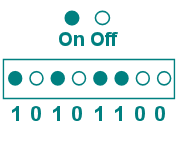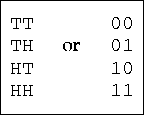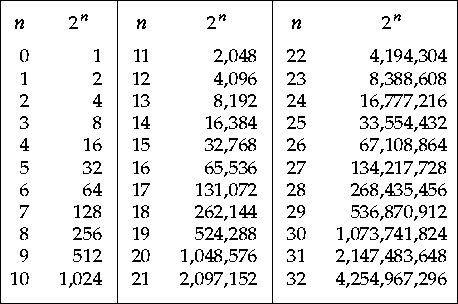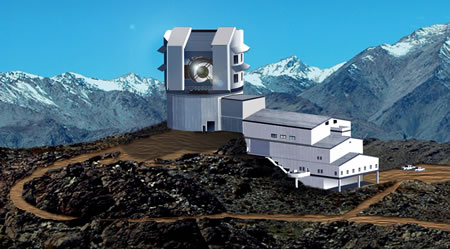
A mechanism, like a box that flips coins, which produces a series of bits, is sometimes called an information source. Even if this information source produces "noise" (e.g. random bits of information) it is still generating physical information. Consider a coin that is flipped twice: What are the possible outcomes?
Four equally likely outcomes can be represented by two bits of individual information (e.g. H or T).

For three coin flips 8 different equally likely outcomes and three bits. So if something has N equally likely outcomes, it will take
b = log2 NPowers of 2 table:


The next step is to have "protocol" mapping onto the bits. That is, column A makes sense as a protocol while column B does not. This is precisely what the ASCII standard is. To represent a character (in the english language) by a unique pattern of bits. In fact, it is a unique pattern of 8 bits and 8 bits make up a BYTE . Each character then requires 1 BYTE of memory to be stored.
Atoms  The "smallest" possible piece of matter
(well not really but we won't worry about quarks here). Arrangements
of atoms give us the periodic table of elements . You can regard this as a protocol. The "smallest" possible piece of matter
(well not really but we won't worry about quarks here). Arrangements
of atoms give us the periodic table of elements . You can regard this as a protocol.
Some equivalencies:
Generally storage size for images can be calculated as follows: Storage in Megabytes = number of pixels x bits per pixel. So, supposed you have a 1 megapixel camera and each pixel contains 16 bits of information. Total image size is then 1 million x 16 bits = 16 million bits. 8 bits per byte so that is 2 million bytes or 2 Megabytes.
Wireless network speeds: On any shared wireless network (like the one in this room) your data transfer speed will likely never be more than 20 Megabits per second = 2.5 Megabytes per second. How many seconds would it take to upload your 21.6 Gbyte movie? A long time: 21,600/2,5 = 8640 seconds = 2.4 hours. The basic point is that it took you 30 seconds to make the information but 2.4 hoursor 8640/30 ~ 300 times longer to disseminate it. This is the essence of the information overload problem. Currently Astronomers are building the the largest digital camera ever constructed and to be put in a location like this:

Camera size is 3.2 BILLION (Giga) pixels. Each single image is 12.8 GigaBytes. 4 images per minute taken = 50 Gigs per minute or 3 Terabytes (TB) per hour. If this detector came ON line today, the data would simply be archived and never even looked at ...
|